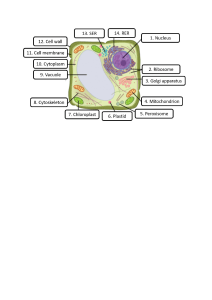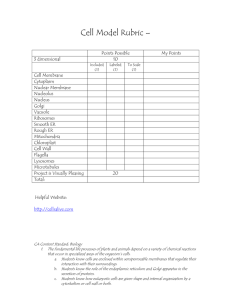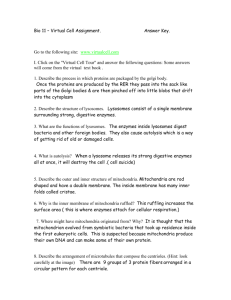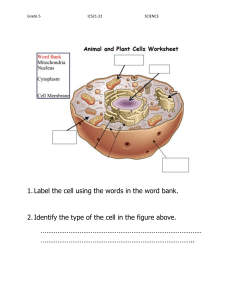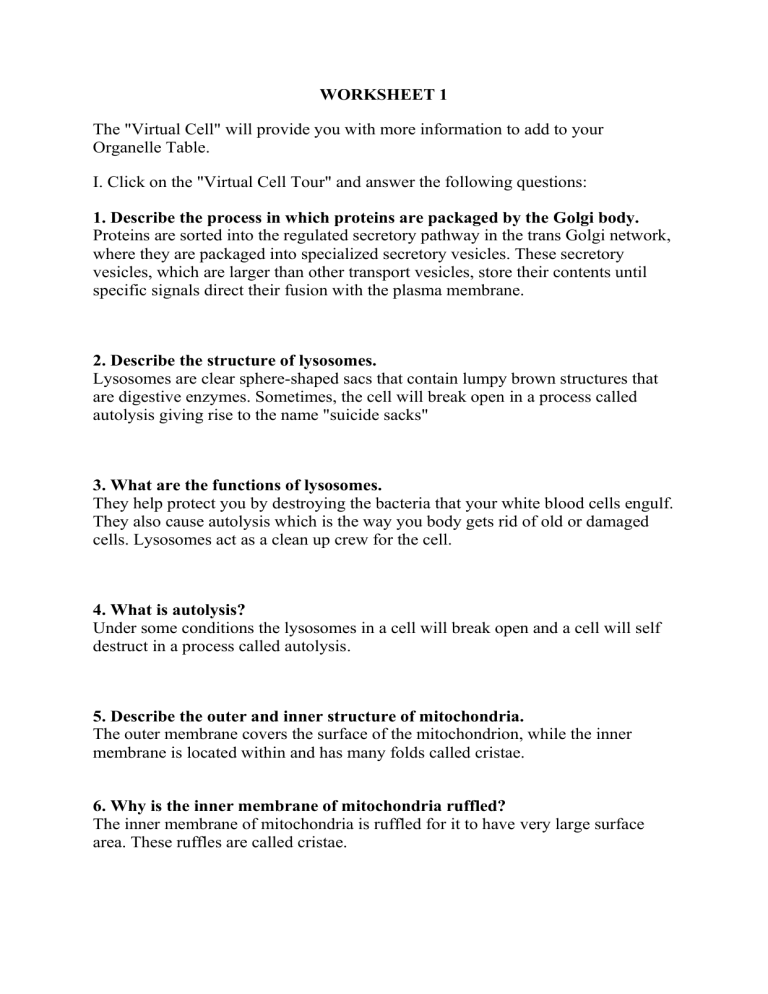
WORKSHEET 1 The "Virtual Cell" will provide you with more information to add to your Organelle Table. I. Click on the "Virtual Cell Tour" and answer the following questions: 1. Describe the process in which proteins are packaged by the Golgi body. Proteins are sorted into the regulated secretory pathway in the trans Golgi network, where they are packaged into specialized secretory vesicles. These secretory vesicles, which are larger than other transport vesicles, store their contents until specific signals direct their fusion with the plasma membrane. 2. Describe the structure of lysosomes. Lysosomes are clear sphere-shaped sacs that contain lumpy brown structures that are digestive enzymes. Sometimes, the cell will break open in a process called autolysis giving rise to the name "suicide sacks" 3. What are the functions of lysosomes. They help protect you by destroying the bacteria that your white blood cells engulf. They also cause autolysis which is the way you body gets rid of old or damaged cells. Lysosomes act as a clean up crew for the cell. 4. What is autolysis? Under some conditions the lysosomes in a cell will break open and a cell will self destruct in a process called autolysis. 5. Describe the outer and inner structure of mitochondria. The outer membrane covers the surface of the mitochondrion, while the inner membrane is located within and has many folds called cristae. 6. Why is the inner membrane of mitochondria ruffled? The inner membrane of mitochondria is ruffled for it to have very large surface area. These ruffles are called cristae. 7. Where might have mitochondria originated from? Why? It is thought that the mitochondrion evolved from symbiotic bacteria that took up residence inside the first eukaryotic cells. 8. Describe the arrangement of microtubules that compose the centrioles. (Hint: look carefully at the image) There are 9 groups of 3 arrangement of the protein fibers. 9. Describe the outer membrane of the nucleus. The nuclear membrane has many pores. The nuclear membrane is continuous with the E.R. 10. Describe the inner contents of the nucleus. The thick ropy strands are the chromatin. The large solid spot is the nucleolus. The nuclelous is a knot of chromatin. It manufactures ribosomes. 11. Describe the appearance of the nucleolus. The nucleolus is a spot of condensed chromatin so it appears as a large solid spot. 12. Describe the appearance of the endoplasmic reticulum. The endoplasmic reticulum is a series of double membranes that loop back and forth between the cell membrane and the nucleus. These membranes fill the cytoplasm but you cannot see them because they are very transparent. 13. What makes rough ER "rough"? The rough E.R. has ribosomes attached to it. This gives it its texture.


